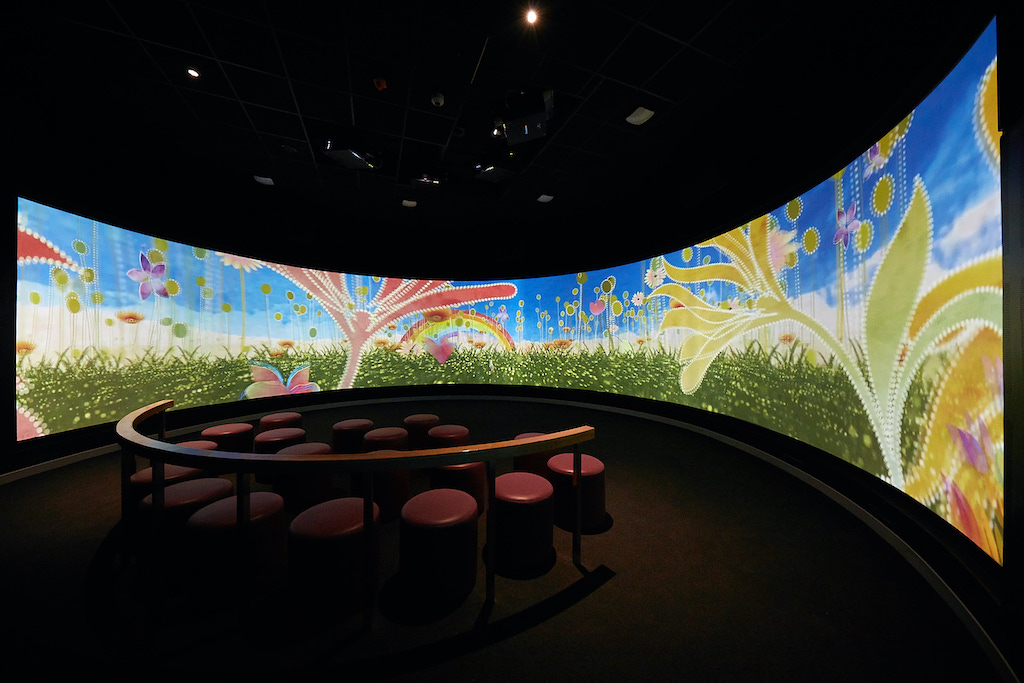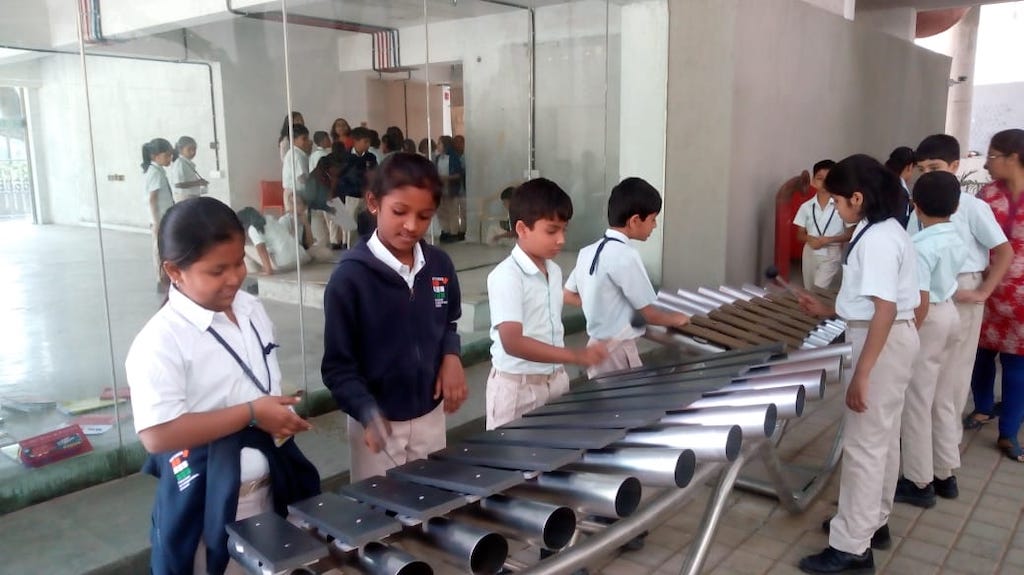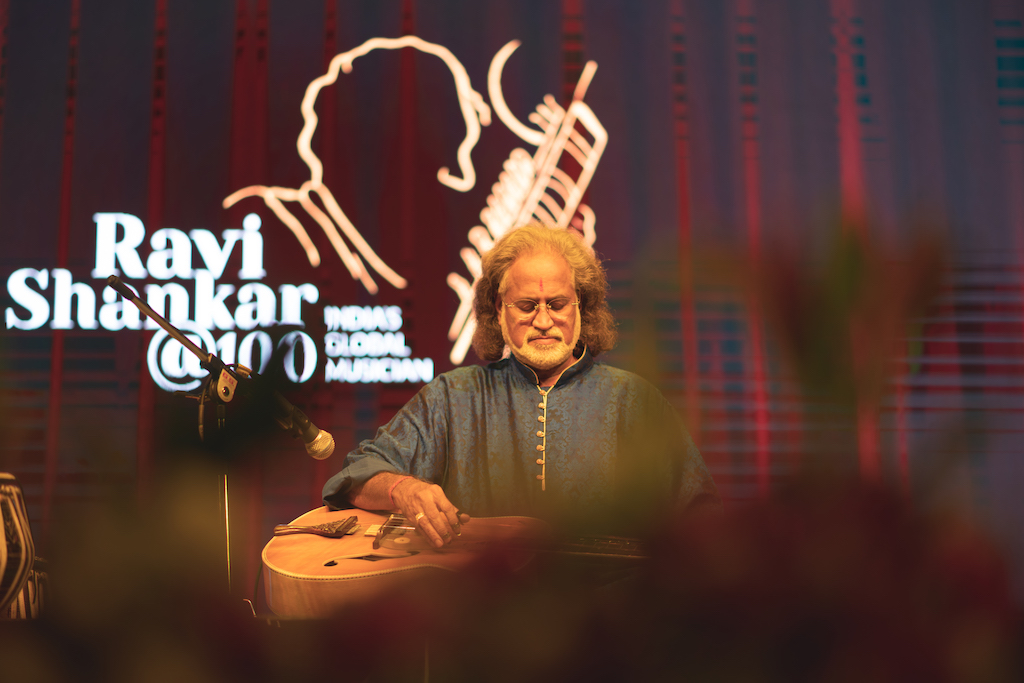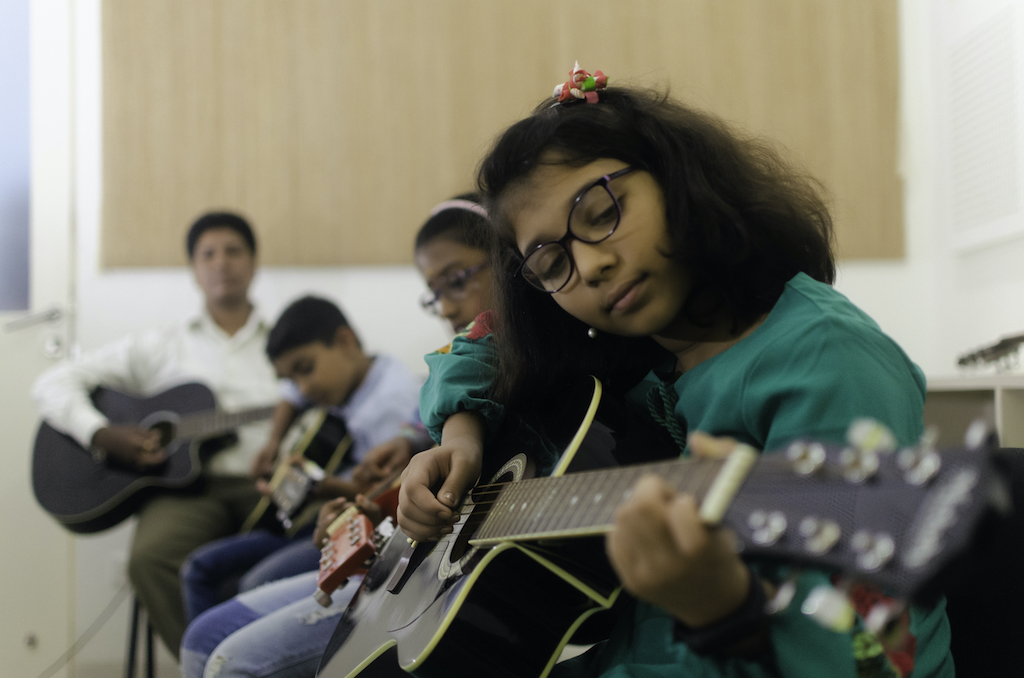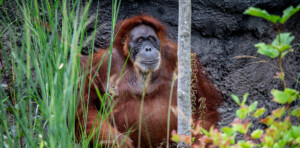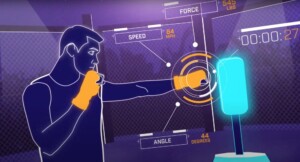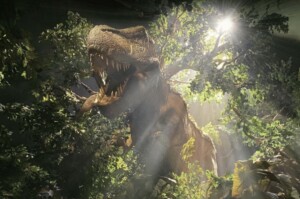The Indian Music Experience Museum (IME), India’s first interactive music museum, opened in 2019. Its vision is to increase the understanding and appreciation of the diversity of Indian music. The museum explores the evolution of Indian music through interactive, multi-sensory exhibits.
Manasi Prasad, its director, is an accomplished Indian classical vocalist with over 20 years of concert experience and a Bachelor of Engineering degree in Information Science. A speaker, writer, and workshop facilitator in the arts, she also holds an MBA from the Indian Institute of Management in Bangalore.
A passion for music
“I think the three things that a music museum needs are music, engineering, and management,” Prasad tells blooloop. “Somehow, without knowing it, I was preparing myself all my life.”
“I am an Indian classical vocalist. This has been something I have been pursuing my entire life. I started learning when I was five years old and started performing concerts when I was in my early teens. Since then, both practice and performance are something I’ve done for over three decades now. Not just in India, where I’m from, but all around the world.”
This is something she continues to pursue very seriously.
“Besides that, in Indian families, we are generally expected to take up mainstream career options. You are expected to do engineering or medicine or something like that. Throughout school, I was fairly academically advanced. So, I ended up doing a degree in information science engineering, while very actively pursuing music and the arts on the side.”
Following that, she got her MBA from one of the top three management schools in the country, while pursuing music as a parallel career:
“I worked as a banker in Wall Street for a little while, then back home in Bangalore. I was fortunate that, very early on, I had opportunities to perform at festivals, concert venues and important platforms, both in India and around the world. For instance, I travelled to Africa, and I was one of the first few Indian musicians to travel to Chile in South America. I did a whole series of concerts and workshops in Chile.”
An opportunity to challenge stereotypes
Travelling highlighted to her how little the world knows, beyond a few stereotypes, about India and Indian classical music:
“This notion of relevance, of communication, of making this entire world of Indian music and the arts, in general, more accessible, is something that has resonated with me throughout my artistic journey.”
While she was balancing being a banker and a musician, an opportunity presented itself:
“The founder of the Indian Music Experience Museum is M. R. Jaishankar, the chairman of a large real estate development company in Bangalore called the Brigade Group. I knew him as a musician, and had won an award that he’d instituted.”
At that point, she had mentioned to him that she didn’t understand why, when there is an Indian Institute of Management, there couldn’t also be an Indian Institute of Music. A few years later, he called her out of the blue:
“He said, ‘I have this idea, I have the space for it; I want to support this new venture with funding. Would you like to come on board and spearhead the project?’ At that point in time, we didn’t know what it would be. We were calling it a music project. We didn’t know if it would be a school or a performance venue, or something else. I jumped at the idea and came on board.
“One of the first things that we did was to look at how we could present Indian music in a way that adds value, is accessible, is educational, and, at the same time, is entertaining, engaging, and interesting.”
The goals of the Indian Music Experience Museum
The aims seem, she says, on the face of it, divergent.
“We wanted, however, to find a way to share the beauty of our culture and heritage, but in a way that was accessible.”
It was at around this point that, separately, they travelled to the Experience Music Project in Seattle, now the Museum of Pop Culture, or MoPOP.
“It was an ‘Aha!’ moment for both of us,” she says. “It is about education, but it’s done in a way that is fun and engaging, and which really celebrates creativity.
“We came back with this idea that if the United States, with 200 years of history, can have so many beautiful museums like the EMP, then surely India, with 2000 years of history and music, can create a space that is interactive and experiential, and which tells the story of Indian music.
“That’s where the idea of the Indian Music Experience came from.”
She adds:
“Initially, we were just calling it the Indian Music Experience. But now we call it the Indian Music Experience Museum because a lot of people didn’t realise that it was a physical space.”
Interactive exhibits and more
Gallagher & Associates (G&A), the internationally recognised interdisciplinary design studio, designed the interpretive experience and exhibition at the Indian Music Experience Museum.
The mission of the IME is to grow the understanding and appreciation of Indian music, from the traditional to the contemporary, around the world.
“In that process, we want to build community through music. That is something that we believe very strongly. It’s concerned with the understanding, education and appreciation of Indian music, but it’s also about building communities around that.”
The IME has three parts.
“The heart of this museum is these interactive exhibit galleries,” she says. “It’s a walkthrough journey through both the history and diversity of Indian music.”
“We have multimedia theatres, touchscreen-based computer interactives, and listening kiosks, so the whole gamut. Interestingly, we also have a sound garden that’s outside the museum building, which is what I’d call low-tech interactivity.
“There is this presumption that all interactivity needs to be high-tech and touchscreen-based. But the idea of the sound garden is to make use of natural materials like wood, stone and metal. It allows people to play around and create music on their own.
“This introduces the concepts of sound, which are vibration, resonance, and frequency, the things that kids study in textbooks. They come here, and they see it come to life. That’s the second part.”
Learning at the Indian Music Experience
The third part is a learning centre.
“There are two parts to the learning centre,” says Prasad. “One is our work with schools, where we have a field trip programme. This was pre-pandemic, of course. Physical classes are just starting off again in India right now.
“The idea is that kids come in with their class on a field trip; they go through the museum on a guided tour by our volunteer docents; they look at various subjects that they would study in school, like history or languages, at the museum.”
“The other part of the learning centre is where we impart formal music education to children, as an afterschool or weekend activity. We have a structured curriculum-based music education, in Indian music forms as well as things like keyboard and guitar and drums.
“Then, of course, we have a performance theatre, the café, gift store, all that kind of stuff.”
Moving IME online
In terms of the digital, rather than physical, space of the IME, she says:
“Right from the beginning, we knew that using technology would be really important in reaching out to newer audiences, especially because of where we are situated. We are in Banglore, which is known as the Silicon Valley of India. There are a lot of software companies, technology, engineers, and young people studying tech here, so that awareness is there.
“The pandemic, of course, accelerated that whole process of becoming serious about our online presence.”
“I wouldn’t say we’ve done anything groundbreaking, but we have definitely focused on putting out online exhibits. We have a 3D walkthrough, of the museum. We’ve also put a lot of educational content online, in addition to doing things on social media, and public programmes via Zoom.
“It is important, because it has allowed us to reach out to audiences beyond just Bangalore, or even India. We have people from Iceland and Japan tuning in to see what we have. It has certainly broken some barriers, but we have a long way to go.”
Partnerships are key
The museum is still very young.
“We opened an exhibit three days before the pandemic started. Our first temporary travelling exhibition was on the life of Ravi Shankar, the famous Indian musician, who won five Grammys and collaborated with the Beatles – what better global figure? Three days after it opened, everything shut down, so the travelling circuit became sort of super small.”
Nevertheless, Prasad has her sights set on international expansion.
“We have believed in partnerships from the beginning,” she explains. “I think that is the way we see ourselves expanding, through partnerships rather than setting up Indian Music Experiences around the world, though that may happen in the long term.”
One example is the IME’s affiliation with the Grammy museum.
“The Ravi Shankar exhibition was supported, in many ways, by the Grammy Museum, with Bob Santelli [Founding Executive Director of the GRAMMY Museum] being part of the curatorial team, and connections with the Ravi Shankar Foundation, things like that best practices. That is one partnership that is still growing.
“We also have a partnership now with Manchester Museum in the UK. We are part of a reciprocal festival of South Asian music, which is going to happen partly in India, and partly in Manchester. This is another way that we are looking to expand the boundaries of where Indian music can go.
“So while we don’t have any immediate plans to set up further up branches, we’d love to go the partnership route, and also to travel our exhibitions.”
Birdsong at the Indian Music Experience Museum
The IME opened its new travelling exhibition, Birdsong, on 1 April. Birdsong explores the science behind bird vocalisations, as well as the influence of birds on music and culture:
“This is really interesting,” says Prasad. “It is about ecology on one hand, and music on the other, and how birds bring these two worlds together. It also looks at the influence, of course, of birds on Indian music.”
The exhibition will be on display at the IME for a period of four months. It will be complemented by events, public programmes, nature walks, workshops and online talks. To commemorate the exhibit’s opening weekend, two special performances were presented, in collaboration with the Goethe Institut/ Max Mueller Bhavan.
On 1 April 2022 IME hosted an Afro-Jazz music ensemble from Germany and on 2 April 2022, a contemporary dance piece – ‘BIRD: Four stories in a song’ which is choreographed by Preethi Atreya. An online version of the exhibition will be unveiled in June, in conjunction with World Environment Day.
Prasad comments:
“Through this and future exhibitions that we have planned, we hope to expand the international circuit, so that we can find presence in other countries, as well.”
Building a community
Community outreach also is a major priority for the Indian Music Experience Museum
“Initially, we were really focused on our exhibitions and public programmes as the main thing that we did. But the idea of building community was always there at the back of our mind.”
This was accelerated by the pandemic:
“Regular programmes and sources of support were dying down. We couldn’t do physical exhibitions or in-person concerts. We said, ‘Hey, this is a really great time to explore how music goes beyond entertainment and education, and really impacts the community.’”
Accordingly, last year the IME embarked on two community outreach initiatives. Both are aimed at expanding IME’s reach to more young people, both in terms of career preparedness and job opportunities, and providing younger children with greater access to music, and to the museum space itself.
“The first is called Project Svaritha,” she explains. “A svaritha is an uplifting tone in music. Through this project, we do two things. One is to bring children from disadvantaged communities into the museum, both to experience the exhibits, but also for educational workshops. We are getting them engaged with music in a way that brings out their creativity.”
Arts for all
When talking about this project, Prasad notes:
“In India, there are few museums, most of them old, government institutions. And children from any background, but especially those from socially disadvantaged communities, are often left out of this entire gamut of the arts as a whole because problems in India are so huge. With access to education, food, and basic standards of living being such a problem, where do the arts figure?
“We believe very strongly that the arts are essential to every child, not just the ones from privileged communities. So, what we are doing with this project is bringing these children from socially disadvantaged communities into the museum. Here they can experience music immersion and workshops. Through that, we hope that the museum becomes more inclusive as a space.”
“The other thing that we are doing, which is perhaps a more in-depth engagement, is with neurodivergent children, who come into the museum for a slightly different experience.
“We worked with the Grammy Museum on creating a special museum setting for those with autism, for example, who don’t react well to bright lights or sudden changes in temperature or extremely loud or jarring sounds. We have worked on creating a safe space.
“Plus we also run a series of workshops using instruments that we’ve created – a xylophone, or cymbals, for example. We give them these to take home, to give them an outlet.
“These are the two projects under Svaritha, which is about making the museum more inclusive.”
Youth input at the Indian Music Experience Museum
The second initiative is Yuva in Culture.
“Yuva means ‘youth’ in Sanskrit and Hindi. Yuva in Culture is an initiative in partnership with the British Council. The idea is to make museums more about young people. We don’t want to just have older people make decisions inside the museum.”
“We have India’s first Youth Advisory Board for an arts institution, where 13 to 18-year-olds give us advice and conduct programmes. This helps us to make the museum more welcoming to young people. Other programmes under the youth space include internships, workshops for young creators, and so on.”
A unique museum
There are two things, Prasad contends, that drive the Indian Music Experience Museum’s initiatives:
“Firstly, our team is, in the majority, women. This is something that I think adds empathy, in terms of our community initiatives. Secondly, it is a team of very young people. India is, of course, a very young country, demographically. The median age is around 26. So although people consider me young to be a museum director, most of my team is even younger. It’s a group of young people who are raring to make a difference.”
In the light of the number and extent of the IME’s programmes and initiatives, it is hard to believe it has only been in existence since 2019.
It will be fascinating to watch what happens next.




